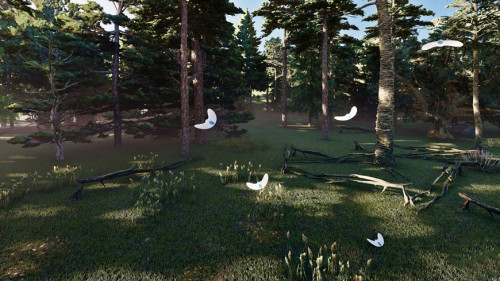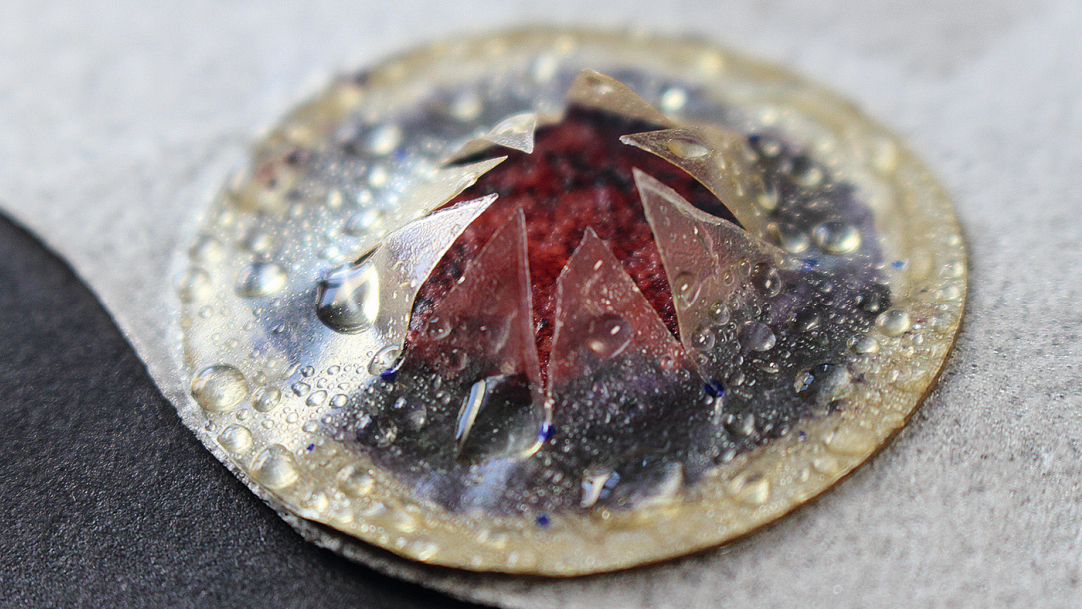They are designed to record the condition of ecosystems, for example in the forest floor - and disintegrate into dust once the work is done: Bio-gliders based on the model of the Java cucumber, which sends its seeds sailing through the air for meters. Empa researchers have developed the sustainable flight sensors from potato starch and wood waste.
Just as leaves tumble to the ground in the fall, the bio-gliders with built-in sensors soar. When a drone has released the smart sensor seeds, they report data on moisture and acidity levels on the ground until they finally disintegrate and become one with the forest floor.
 Ephemeral data collectors: Bio-gliders are distributed in the forest by a drone. When they reach the ground, they send environmental data until they are finally decomposed by soil organisms (Illustration: Empa)
Ephemeral data collectors: Bio-gliders are distributed in the forest by a drone. When they reach the ground, they send environmental data until they are finally decomposed by soil organisms (Illustration: Empa)
Empa researcher Fabian Wiesemüller and Mirko Kovac's team from the Sustainability Robotics Laboratory want to use the data from the smart seeds to monitor the condition of the forest soil and its biological and chemical balance. An initial sensor is now being used to measure the pH value using a classic litmus test. The dye obtained from lichens reacts to acid with a color change from violet to red. The color change of the sensor on the forest floor is then registered by a drone that flies over the area.


